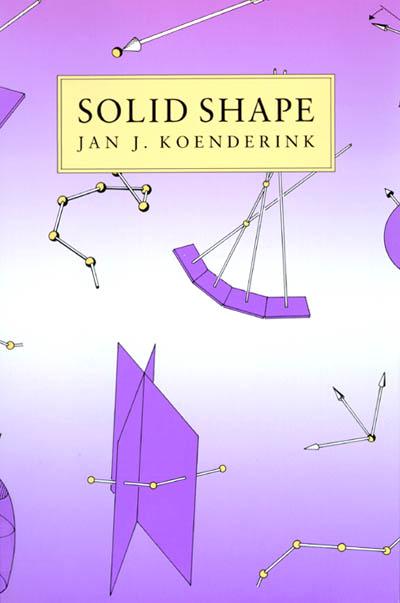Last update : Feb. 2, 2001
BACK
Publications by J.
Koenderink et al. (Helmholtz Instituut, Human Perception Group
) on ridges and related topics :
BibTeX references.
The Structure of Relief
J.J. Koenderink and A.J. van Doorn
in Advances in Imaging & Electron Physics, vol.103,
pp.65-150, 1998.
Abstract
In many sciences scalar fields on 2D manifolds play an
important role. We investigate the structure of such fields
("relief"). Historically, the study of this problem is
related to that of the so-called "topographic curves", which
are the level curves (or contour curves)
and fall curves (or curves of steepest descent) of
a landscape and its "ridges"
and "courses". The
latter entities are important in many applications but have remained
the object of considerable controversy in the literature till the
present day.
We attempt a balanced review of the various definitions and propose
novel rational and pragmatic approaches. With modern computer
facilities and much improved algorithmic tools (both symbolical and
numerical) many calculations of mere theoretical interest in the past
have now become viable in everyday scientific work. We provide a short
discussion of possibilites.
Notes
Koenderink J.J. and Doorn A.J. van
Pattern Recognition Letters, v.15(5), pp 439-443, March 1994.

Koenderink J.J.
MIT Press, Cambridge,
Massachusetts, USA, 1990, 715 pp.
ToC
-
Introduction
-
About this book
-
The necessary background
-
Where the emphasis is
-
What not to expect
-
Shape and Space
-
An operational view of space
-
Basic entities and methods
-
How to define constraints
-
Constraint defined operationally
-
Mechanical operationalizations
-
Optical operationalizations
-
Shape tolerances
-
Shape models and their use
-
Models for curves
-
Models for surfaces
-
Volumometric models
-
Euclidean Space
-
Geometries
-
Convex sets
-
Coordinates systems
-
The myopic view
-
Frame fields
-
Curved Submanifolds
-
General considerations
-
4Codimension
-
Curvature, extrinsic and intrinsic
-
The method of "Moving Frames"
-
Calculus on the manifold
-
Transversality
-
Order of contact
-
The topologically distinct surfaces
-
Singularities of vector fields
-
Curves
-
Why study curves?
-
Curves as orbits
-
The edge of regression
-
The polar developments
-
Curves in central projection
-
Computer implementation
-
Local Patches
-
Strips
-
6.2 Local surface patches
-
6.3 Intrinsic curvature
-
6.4 Extrinsic curvature
-
6.5 The asymptotic spherical image
-
6.6 The osculating cubic
-
6.7 Special patches
-
6.8 The local shape index
-
6.9 Assorted singular points
-
6.10 The Fundamental Theorem
-
Global Patches
-
Local & Global
-
Curve congruences
-
Patches
-
Examples
-
Global Gauss-Bonnet
-
Application to Ecological Optics
-
Ranging data
-
The contour
-
Furrow, dimple & bell revisited
-
The illuminance
-
Felix Klein's Conjecture
-
Morphogenesis
-
Evolutionary processes
-
Scale space
-
Theory of measurement
-
Densities and Level Sets
-
Singularities
-
Canonical projection
-
Morphological scripts
-
"Shape Language"
-
Shape in Flux
-
Applicability
-
Special results
-
Deformation of a curve
-
Deformation of a surface
-
Infinitesimal bending
-
Final remark
-
Shape Models
-
Axes
-
Cratings & polyhedral approximations
-
Ovoid assemblies
-
Nets
-
Functions with "knobs"
-
Plies of sugar cubes
-
How to Draw and Use Diagrams
-
What to avoid
Appendix A. Your Way Into the Literature
A.1 Some helpful literature
A.2 Pedestrian's guide to the past
A.3 Special subjects
Appendix B. Glossary
BACK
Page created & maintained by Frederic Leymarie,
1998-2001
Comments, suggestions, etc., mail to: leymarie@lems.brown.edu

